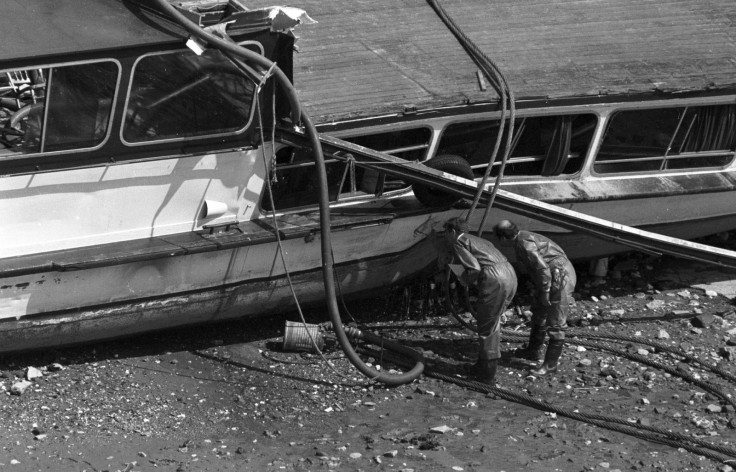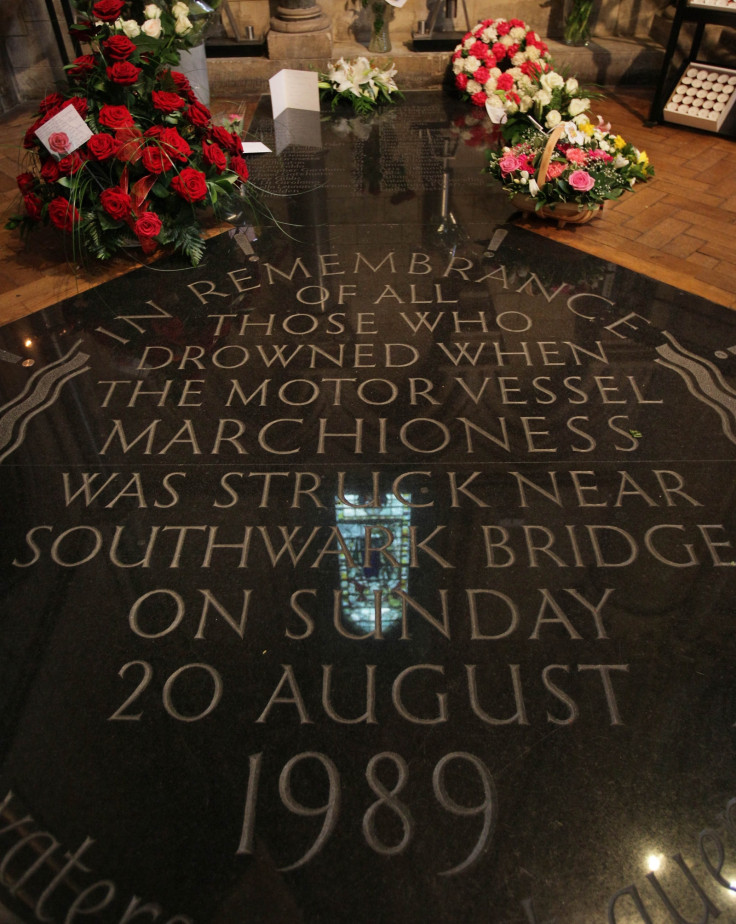25th Anniversary of the Marchioness Disaster: What Happened When the Riverboat Sank?

Twenty-five years ago today in the early hours of 20 August 1980, a wall of iron – a suction dredger weighing around 1,800 tons – struck the side of pleasure boat the Marchioness.
The anchor of the 262ft-long Bowbelle cut through the side of the riverboat, peeling away its roof. The Marchioness rolled over within seconds and filled with water as it capsized, ripping away its superstructure as it was forced underneath the enormous dredger.
Just 30 seconds after the collision, the smaller boat was completely immersed. Of the 131 guests on board the riverboat, just 80 survived the crash.
Birthday party
The Bowbelle extracted sand and gravel from the seabed outside the Thames Estuary and took it upriver to its berth at Nine Elms near Battersea. The Marchioness had been built in 1923 and served as one of the little ships of Dunkirk in 1940.
There were 131 people on board the pleasure boat, including the crew, catering staff and guests at a private party. It had been organised by the photographer agent Jonathan Phang to celebrate the 26<sup>th birthday of Antonio de Vasconcellos, who worked in a merchant bank.
Phang had organised a three-part celebration. Friends would gather for an eight-person dinner party on Meard Street, then others would join for drinks. Finally, the group would have a party on board the Marchioness.

The majority of the party-goers were in their twenties, including Francesca Dallaglio – the older sister of future England national rugby union captain Lawrence Dallaglio.
Aftermath
At 1.46am, the Marchioness was struck by the Bowbelle. Witnesses described the dredger as "hitting it about its centre then mounting it, pushing it under the water like a toy boat".
Of the deceased, 24 were recovered from the sunken hull, while the majority of the survivors had been on the upper decks at the time of the collision. Those who survived recalled later how they jumped into the water, fearful that they would be killed by the propellers of the Bowbelle.
"I looked up and saw a monster," survivor Andrew Sutton told the Guardian. "The boat that hit us was a big black shape in the sky above me and to me it looked like it had eyes. Then the deck was tilting and I grabbed Helen's hand. 'We have to go now,' I said, and we stepped into the water."
The disaster was found by the Marine Accident Investigation Branch to have been caused by the poor visibility from each ship's wheelhouses. Both vessels were using the centre of the river, and there was a lack of clear instructions to the lookout at the bow of the Bowbelle.
In 1991, the skipper of the Bowbelle, Douglas Henderson, was tried for failing to keep a proper lookout, but he was formally acquitted.
In April 1995, a coroner's inquest found the victims of the crash were unlawfully killed. After pressure from the Marchioness Action Group, John Prescott ordered a formal investigation into the crash in 2000. The report by Lord Justice Clarke, who chaired the inquiry, blamed poor lookouts on both vessels and criticised the owners and managers of both boats for failing to instruct and monitor their crews properly.
In 2001 an inquiry by the Maritime and Coastguard Agency into the competence and behaviour of Captain Henderson concluded that he should be allowed to keep his master's certificate.
However, they "strongly deprecated" his conduct in drinking five pints of beer in the afternoon prior to the accident - and for his admission that he had forged some signatures on certificates and testimonials to obtain his master mariner certificate of competency in 1988.
In 2002, the Royal National Lifeboat Institution set up four lifeboat stations at Gravesend, Tower Pier, Chiswick Pier and Teddington.
A memorial service will take place at Southwark Cathedral on Wednesday 20 August.
© Copyright IBTimes 2024. All rights reserved.






